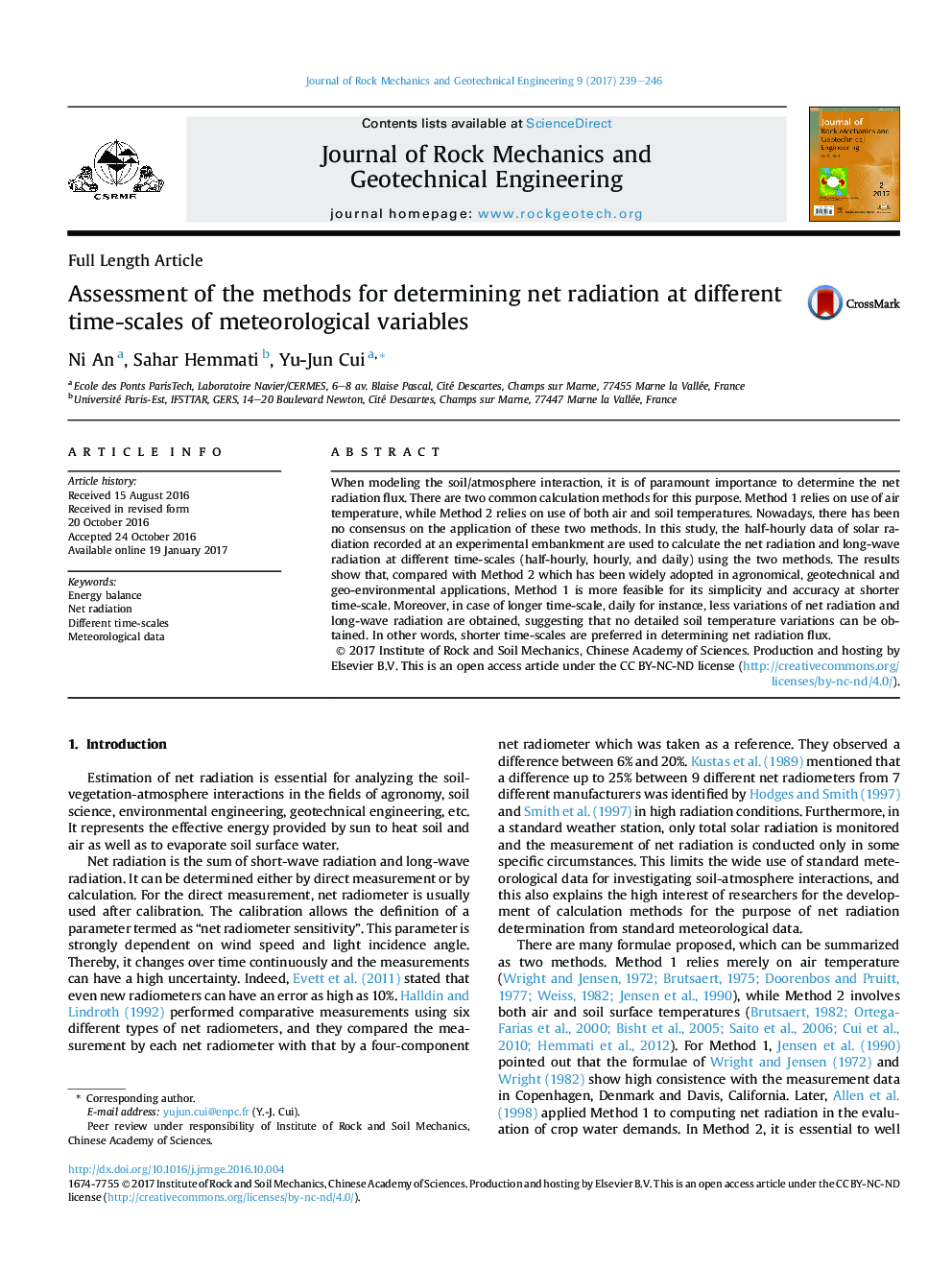| Article ID | Journal | Published Year | Pages | File Type |
|---|---|---|---|---|
| 4923786 | Journal of Rock Mechanics and Geotechnical Engineering | 2017 | 8 Pages |
When modeling the soil/atmosphere interaction, it is of paramount importance to determine the net radiation flux. There are two common calculation methods for this purpose. Method 1 relies on use of air temperature, while Method 2 relies on use of both air and soil temperatures. Nowadays, there has been no consensus on the application of these two methods. In this study, the half-hourly data of solar radiation recorded at an experimental embankment are used to calculate the net radiation and long-wave radiation at different time-scales (half-hourly, hourly, and daily) using the two methods. The results show that, compared with Method 2 which has been widely adopted in agronomical, geotechnical and geo-environmental applications, Method 1 is more feasible for its simplicity and accuracy at shorter time-scale. Moreover, in case of longer time-scale, daily for instance, less variations of net radiation and long-wave radiation are obtained, suggesting that no detailed soil temperature variations can be obtained. In other words, shorter time-scales are preferred in determining net radiation flux.
